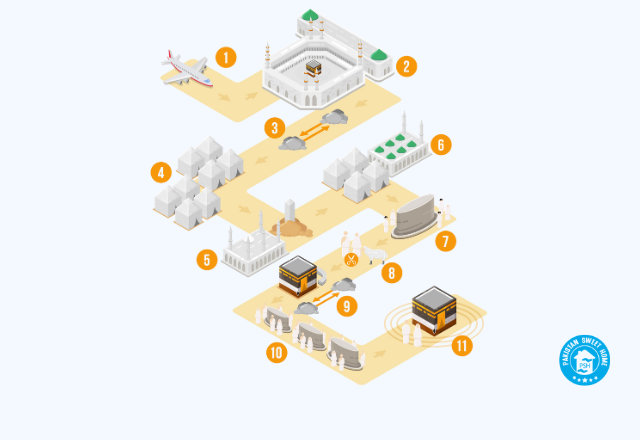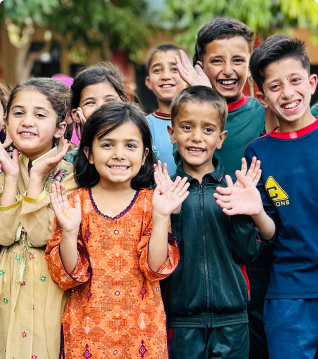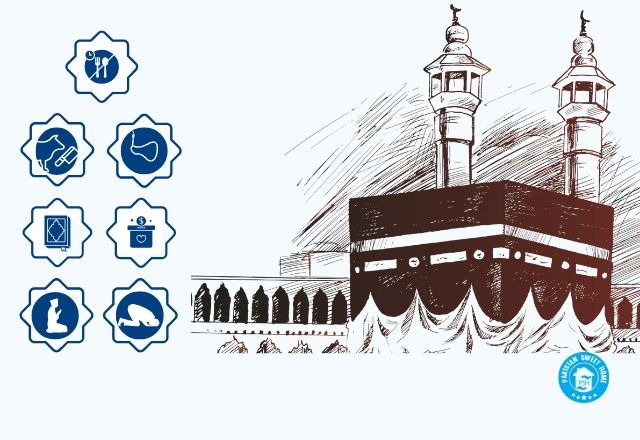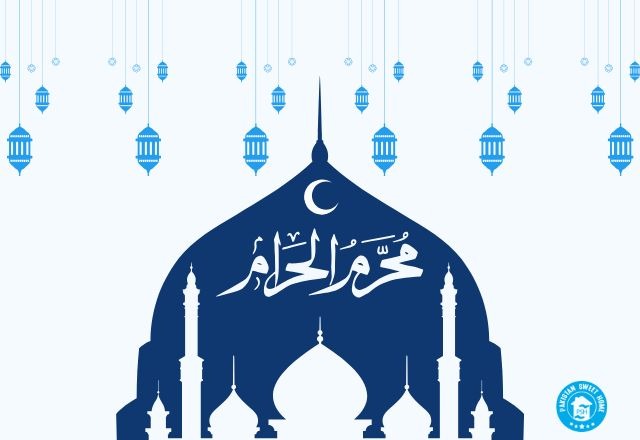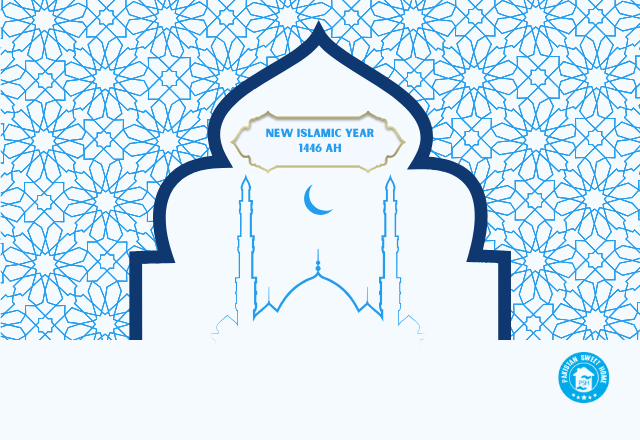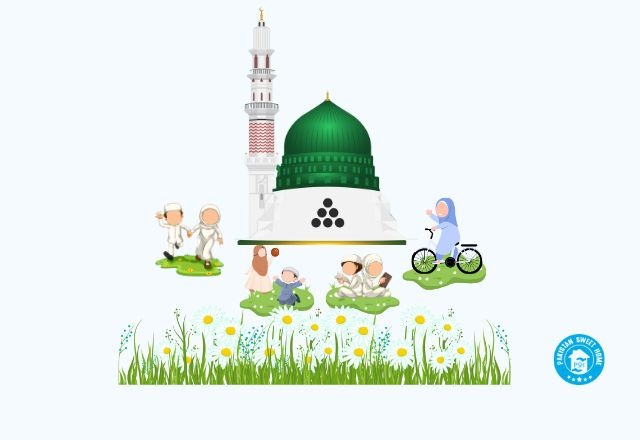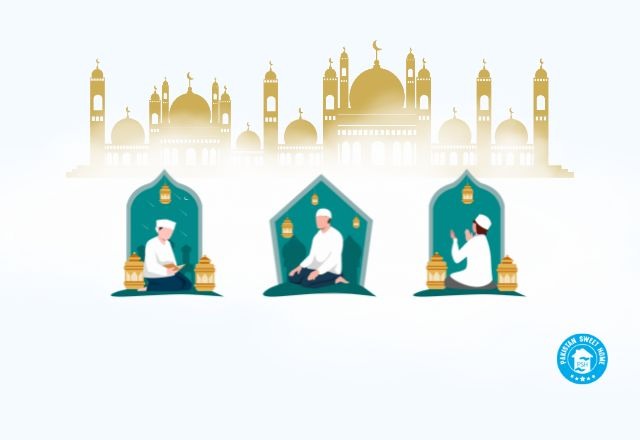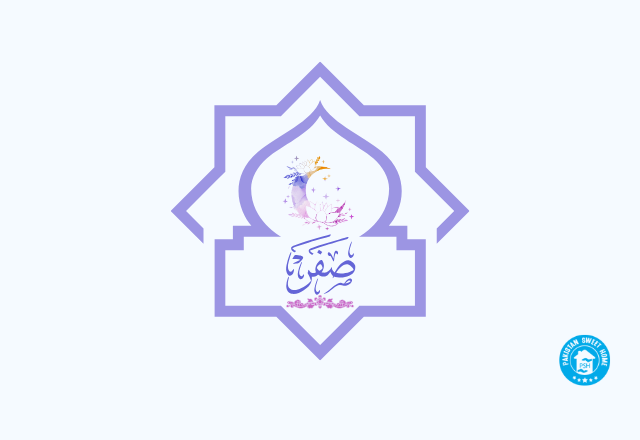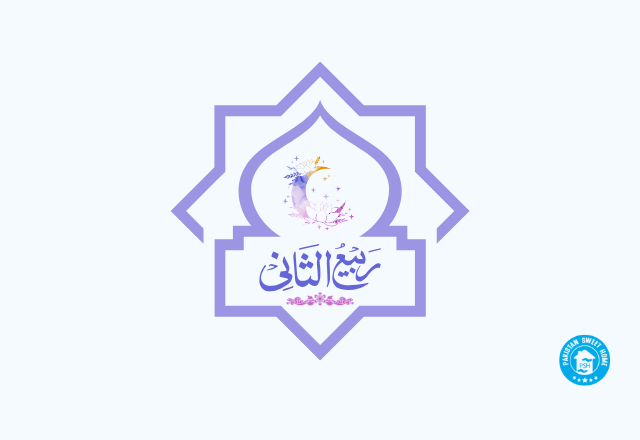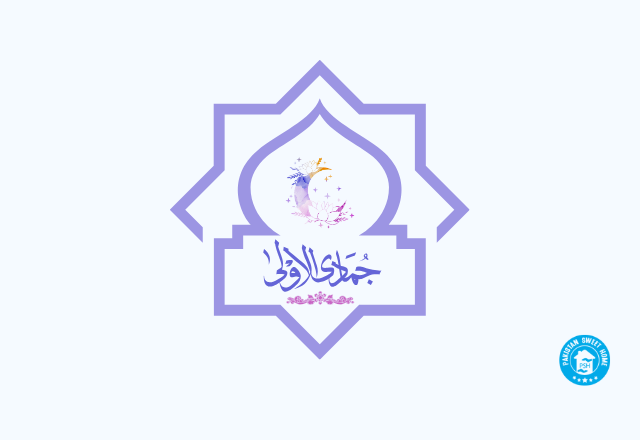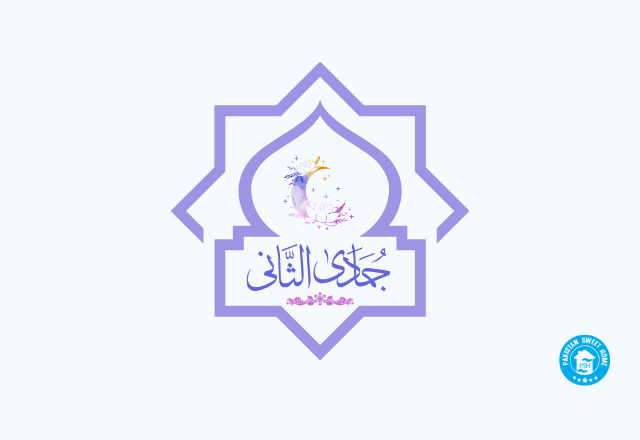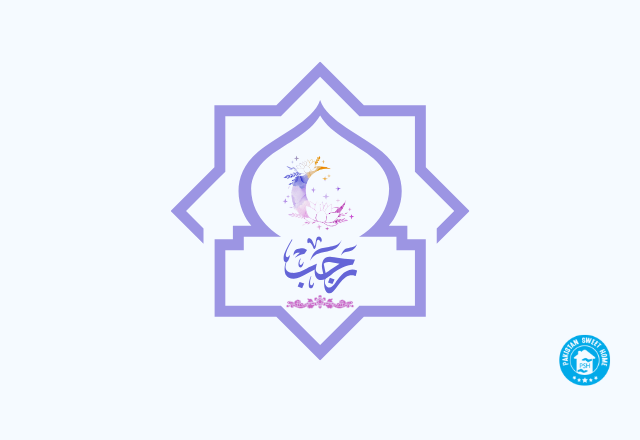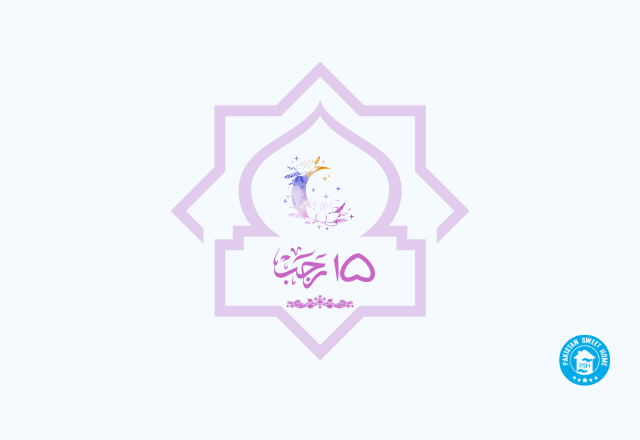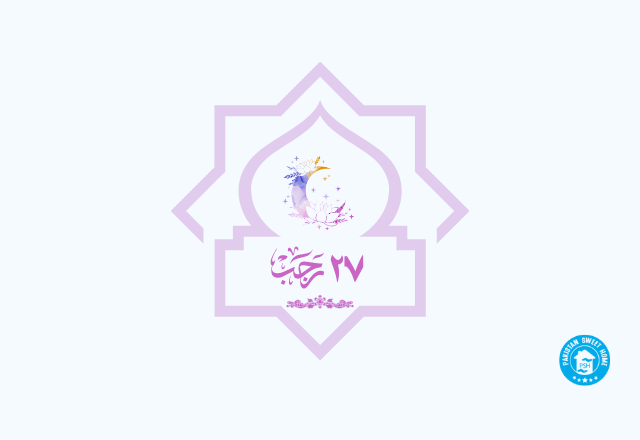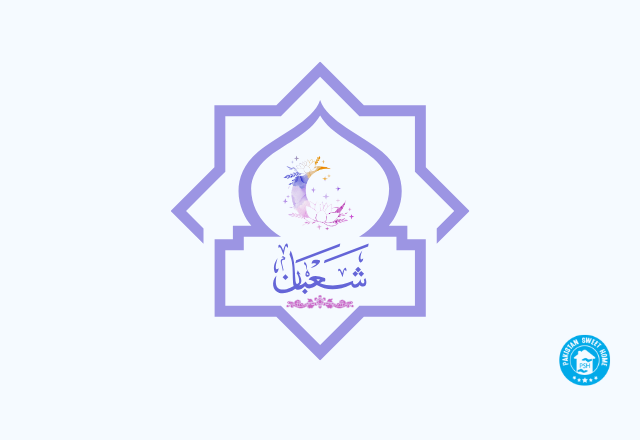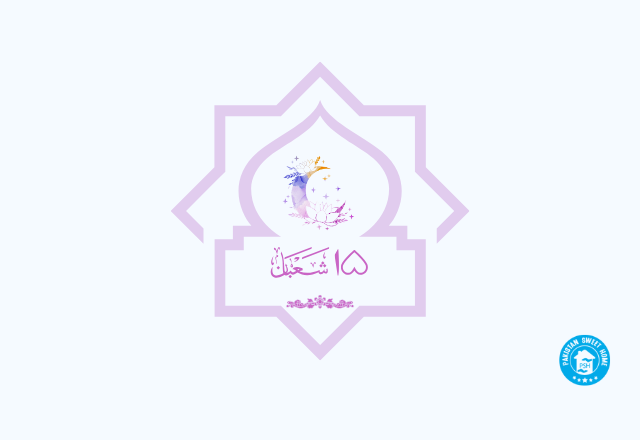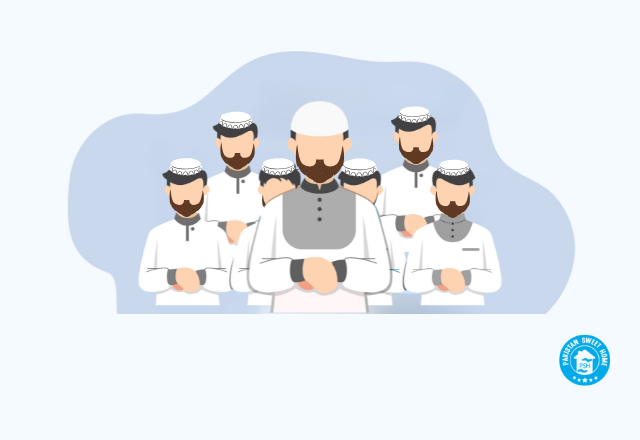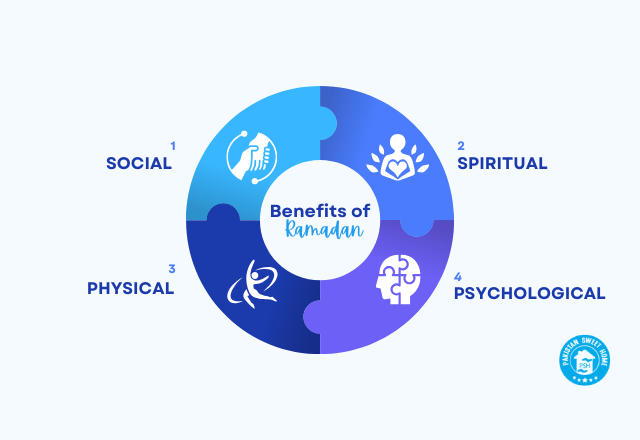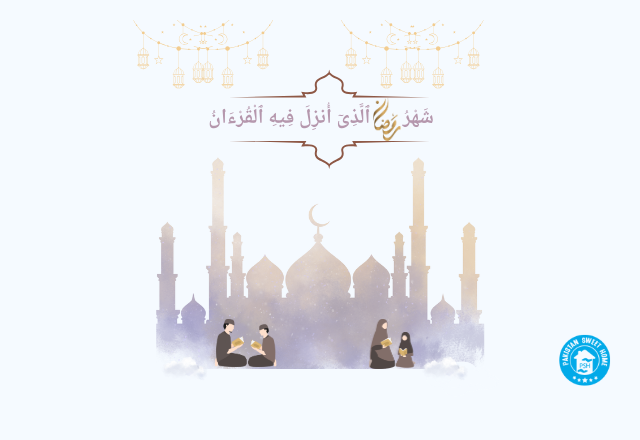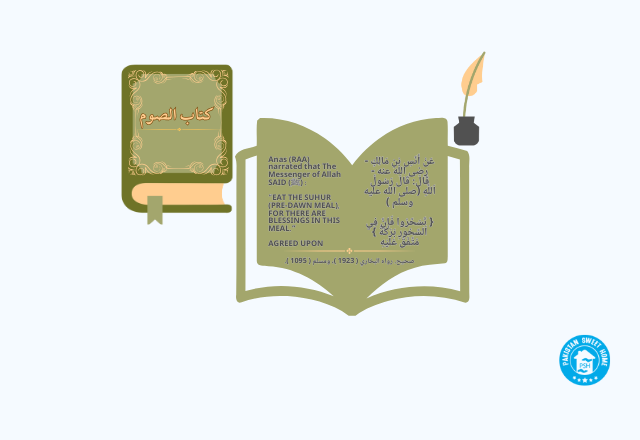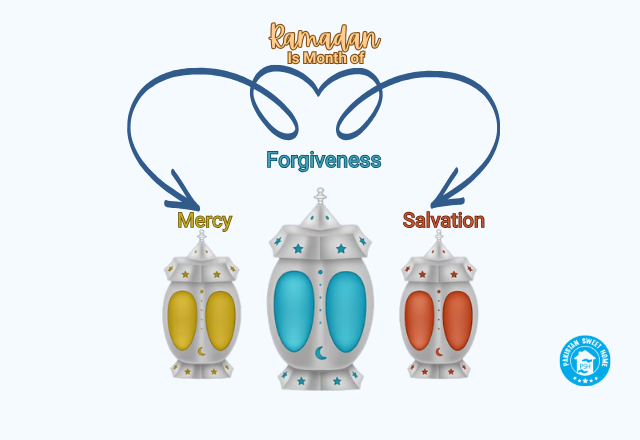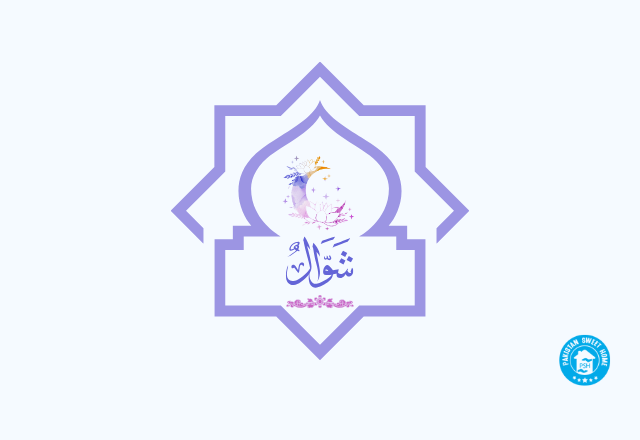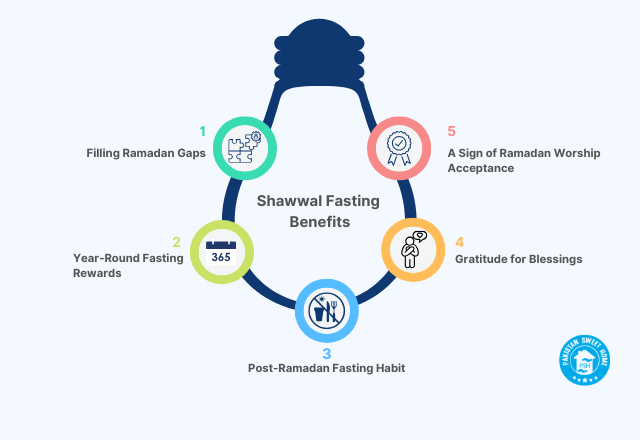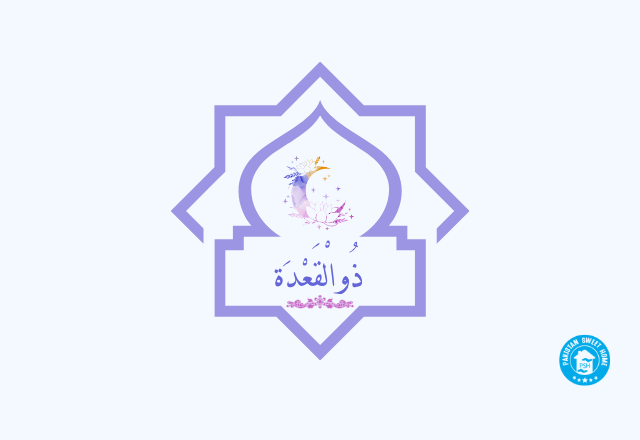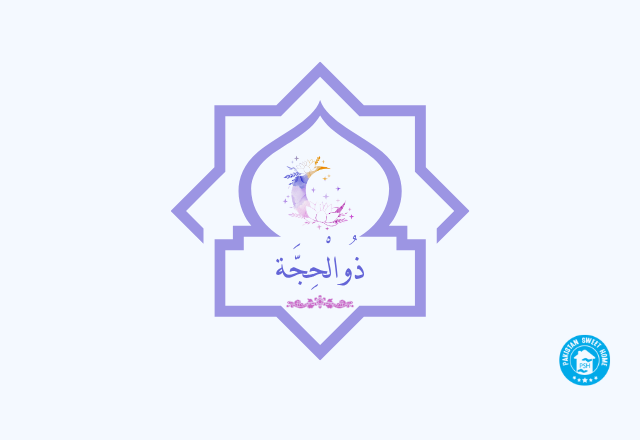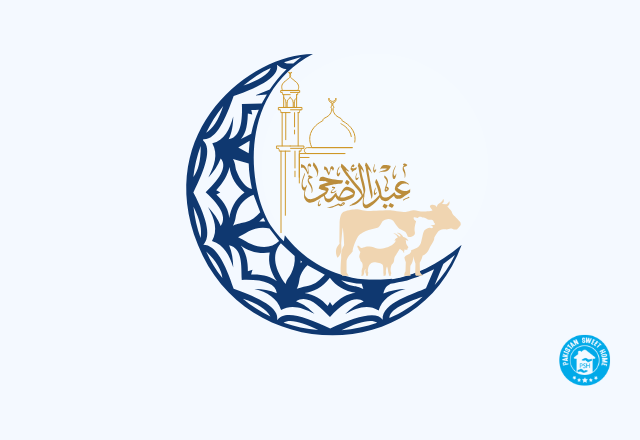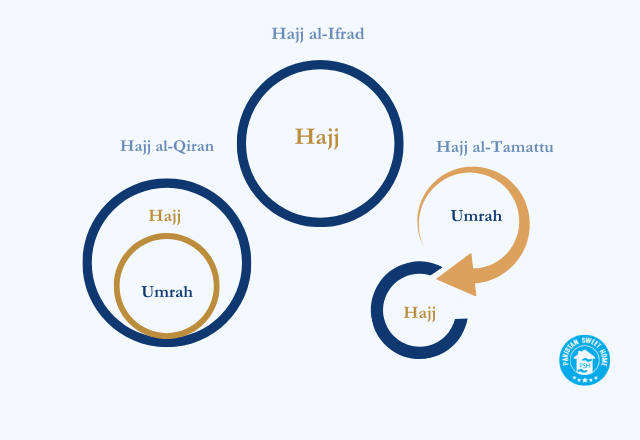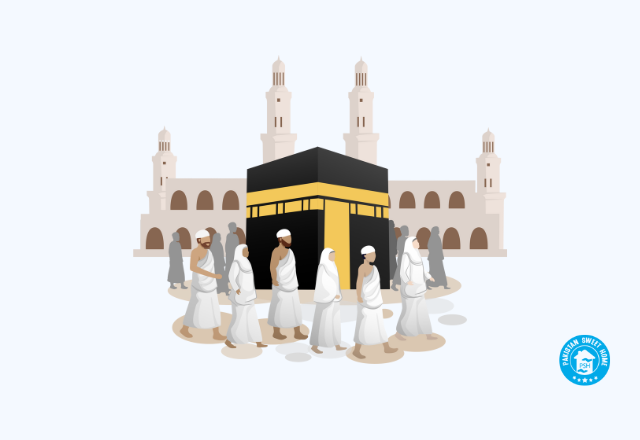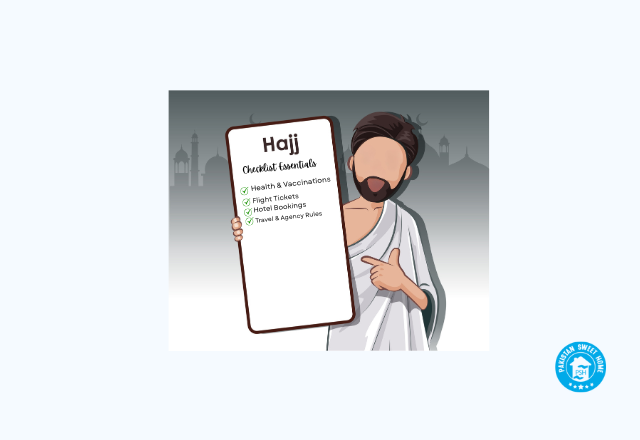Every year, millions of Muslims long to perform Hajj, but many feel overwhelmed by the complexity, rituals, and spiritual weight of this sacred journey.
That hesitation can lead to confusion, doubt, and even a missed opportunity to fulfill one of Islam’s greatest acts of worship. Yet Hajj is more than a pilgrimage — it’s a deep spiritual reset.
It cleanses the soul and strengthens your connection with Allah (SWT). It also revives the legacy of sacrifice, unity, and submission shown by Prophet Ibrahim (AS), Hajar, and Prophet Muhammad (PBUH).
Let’s explore the history, significance, and steps of Hajj to understand its true spiritual essence.
History of Hajj
The history of Hajj begins with one of the most revered figures in Islam: the Prophet Ibrahim (AS). Alongside his son Ismail (AS), he constructed the Kaaba at the site of the Zamzam well, marking it as a sacred place for the worship of Allah (SWT), the One True God.
As time passed, the city of Makkah grew around the Kaaba, attracting traders, travelers, and worshippers. Prophet Ibrahim (AS) returned each year to perform pilgrimage, and when Ismail (AS) received prophethood, he continued this holy tradition.
But over the generations, the Kaaba’s purpose was corrupted. Idol worship took over, and the once-sacred sanctuary became a center for polytheism and trade, housing hundreds of idols within its walls.
The Miracle of Zamzam
One of the most moving stories tied to Hajj is the origin of the Zamzam well, a symbol of divine mercy and resilience.
- Following Allah’s command, Ibrahim (AS) left his wife Hajar and their infant son Ismail (AS) in the barren desert of Makkah with limited provisions.
- As their food and water ran out, Hajar desperately ran seven times between the hills of Safa and Marwah, searching for water.
- In response to her faith and struggle, Allah (SWT) caused the miraculous Zamzam spring to gush forth from the ground.
- This water not only sustained them but also led to the founding of the settlement of Makkah, where the Kaaba would later stand.
The Hajj in the Era of the Prophet Muhammad (PBUH)
In 632 CE, Prophet Muhammad (PBUH) — a descendant of Ibrahim (AS) — revived the Kaaba’s original sanctity. He also reestablished monotheistic worship.
- He removed the idols from the Kaaba and declared it the House of Allah (Baitullah).
- Hajj was made an essential practice for all Muslims, tied to the sacred month of Dhul al-Hijjah.
- Interestingly, this month was already honored by pre-Islamic Arabs, who would suspend fighting and perform pilgrimage. The Prophet (PBUH) preserved this tradition but redirected it solely toward Allah (SWT).
Significance of Hajj
Hajj is one of the five pillars of Islam, making it a religious obligation for every Muslim.
The Five Pillars of Islam are:
- Profession of Faith (Shahada): The belief and declaration that “There is no deity worthy of worship except Allah, and Muhammad (PBUH) is the final Prophet sent by Allah.”
- Prayer (Salah)
- Alms (Zakat)
- Fasting (Sawm)
- Pilgrimage (Hajj)
Unlike prayer, alms, and fasting, Hajj is required only once in a Muslim’s lifetime, provided they are physically, emotionally, and financially able. However, Muslims are encouraged to perform it more than once if they have the means.
The Hajj pilgrimage tests patience and endurance, often posing spiritual, emotional, and physical challenges. Despite this, its sanctity offers a unique opportunity to grow closer to Allah (SWT), and for many Muslims worldwide.
Muslims are commanded by Allah (SWT) to perform the sacred pilgrimage of Hajj, as stated in the Holy Qur’an:
“You will enter the Sacred Masjid, if Allah wills, in safety and security. As part of the pilgrimage rituals, you will shorten or shave your hair. You will have no fear. For Allah knew what you did not, and has promised an immediate victory alongside this."
Surah Al-Fath: 27
Purpose of Hajj
The purpose of Hajj is to fulfill our spiritual obligations to Allah (SWT) and demonstrate our submission to Him.
Muslims believe that Hajj provides an opportunity to erase past sins and begin anew in the eyes of Allah. Moreover, performing Hajj with heightened God-consciousness (Taqwa) is highly encouraged. Striving for excellence in the rituals is rewarded with Paradise.
Abu Hurairah narrated that the Prophet (PBUH) said:
"An Umrah performed to another Umrah serves as an expiation for the sins committed between them, and a Hajj Mabrur (accepted Hajj) is rewarded with nothing less than Paradise."
Sunan Ibn Majah: 2888
Steps of Performing Hajj
There are three types of Hajj: Tamattu, Ifraad, and Qiran, each with specific rituals and procedures.
For this guide, we will focus on the Tamattu form of Hajj, which the Prophet Muhammad (PBUH) recommended. Before proceeding to the steps of Hajj, let's check the eligibility criteria for Hajj.
Conditions for Performing Hajj
There are specific conditions that must be met to perform Hajj:
- Eligibility of Adults: Only adult Muslims, whether male or female, are required to perform Hajj. Children may accompany their parents, but it is not mandatory for them.
- Exemption for the Physically Incapacitated: Muslims who are too weak, ill, elderly, or physically incapable are exempt from performing Hajj.
- Financial Ability: A Muslim must be financially able to afford the pilgrimage. Those in debt are not required to perform Hajj until their debt is cleared and they can prioritize the payment. However, if one is in debt, they may still perform Hajj under the following conditions:
- The creditor grants permission.
- The debtor has sufficient time to pay off the debt.
- Performing Hajj does not hinder their ability to repay the debt.
Performing Hajj is one of the essential Sunnahs, especially emphasized during the first ten days of Dhul al-Hijjah.
Here are the 19 detailed steps to perform Hajj correctly, based on the Tamattu method for a complete pilgrimage.
1. Preparation and Intention
Before arriving in Makkah for Hajj, you must make a sincere intention (niyyah) in your heart to perform it. The intention should solely be for the sake of Allah, with a genuine desire for rewards in the hereafter. The intention must be free from any desire for worldly gain or to impress others.
2. Entering the State of Ihram
To begin, you will enter the state of Ihram, which is a spiritual state of ritual purity. Men must wear the designated white cloth, one piece wrapped around the waist and shoulder.
Women may wear any clothing they choose, but must adhere to the rules of the Hijab, avoiding face coverings. Men and women must wear sandals; fully covering shoes are prohibited during Ihram.
Ihram signifies the state of purity entered when you intend to go for Hajj. Over 2.5 million pilgrims gather in Makkah, and in Ihram, all are equal before Allah (SWT). Status, race, culture, and wealth hold no significance while in this sacred state. The clothing rules for Ihram are simple yet strict, and they must be followed precisely.
While in Ihram, avoid activities such as smoking, swearing, cutting nails, shaving, and using perfume or scented soap. This period requires mindfulness of your behavior and words to maintain your spiritual purity. When you arrive at Masjid al-Haram in Makkah, you are fully prepared to begin your Hajj journey.
- Pack an extra Ihram for comfort and cleanliness.
- Wear broken-in sandals to avoid blisters.
- Be physically and mentally prepared — Umrah begins with Tawaf and Sa’i upon arrival.
4. Tawaf x 7
Tawaf is a key rite of hajj, involving walking seven circuits around the Kaaba in an anti-clockwise direction. Each circuit of Tawaf starts and ends at the Black Stone, located within the Kaaba, marking completion.
Along with Tawaf, Muslims offer voluntary prayers to thank Allah (SWT) for a safe arrival and a blessed journey.
5. Safa and Marwa
After Tawaf, Muslims perform Sa’i, walking and running between the two hills of Safa and Marwa in Makkah. The Sa’i ritual begins at Safa, walking towards Marwa, running between green markers, and walking back to complete one lap.
A total of seven laps between Safa and Marwa completes the Sa’i, a key component of the Hajj pilgrimage. Sa’i commemorates the trials of Hajar, Prophet Ibrahim’s (AS) wife, as she searches for water for her son Ismail.
6. Clip/Shave Hair (Umrah Ends)
After completing the Sa’i, men will either clip or shave their hair, while women will trim it to fingertip length. This marks the end of Umrah, allowing you to exit Ihram until the 8th of Dhul Hijjah.
- Don’t rush through the rituals — it’s normal to feel tired after Tawaf.
- Take your time, rest when needed, and drink plenty of Zamzam water, available between Safa and Marwa.
- Staying hydrated and calm helps you stay focused and spiritually present.
7. Resting and Praying
After completing Umrah, you will stay in Makkah during this blessed month, preparing spiritually for the upcoming Hajj. Surrounded by fellow Muslims, use this time wisely for worship and reflection. Ensure you get plenty of rest to replenish your energy for Hajj, which begins on the 8th of Dhul Hijjah.
8. Resuming the Ihram Status (Day 1/8th Dhul Hijjah)
The beginning of Hajj on the 8th of the Islamic month of Dhul Hijjah marks the start of your spiritual journey, Inshaa Allah. Enter the sacred state of Ihram again, purifying yourself for the most spiritually rewarding period of your life. This holy time brings blessings and forgiveness from Allah (SWT).
Ihram Rules
When in a state of Ihram, you are prohibited from smoking, swearing, shaving, clipping nails, and engaging in sexual relations. Fighting, arguments, hunting, killing, or breaking things without justification are also forbidden during Ihram.
Scented products like perfumes, moisturizers, makeup, and soaps are not allowed, but unscented toiletries can be used as substitutes.
Once prepared for Ihram, begin reciting the Talbiyah invocation:
لَبَّيْكَ اللَّهُمَّ لَبَّيْكَ، لَبَّيْكَ لَا شَرِيكَ لَكَ لَبَّيْكَ، إِنَّ الْحَمْدَ وَالنِّعْمَةَ لَكَ وَالْمُلْكَ، لَا شَرِيكَ لَكَ
Labbayka Allahumma labbayk. Labbayk la shareeka laka labbayk. Inna al-hamda wa n-ni'mata, Laka wal mulk. La shareeka lak.
Translation: “Here I am, O Allah, here I am, You have no partner, here I am. All praise and blessings are Yours and all sovereignty. You have no partner.”
You will then proceed to Mina, a neighborhood in Makkah. It is approximately eight kilometers from the city center with your Hajj group.
It is advisable to carry essential unscented items like sun cream, moisturizer, Vaseline, and soap for protection and comfort.
9. Arrival at Mina
Upon arrival in Mina’s tent city, you will settle into your assigned tent and prepare for prayers. You will perform your obligatory prayers, including Dhuhr, Asr, Maghrib, Isha, and Fajr, shortening four-unit prayers to two.
Spend the night in prayer, reading the Quran, and reflecting spiritually to prepare for the second day of Hajj. It’s essential to make the most of this special night, focusing on devotion and spiritual growth during this time.
Be patient, as the space inside the tents may be tight, with pilgrims close to one another. The weather may be hot, so ensure you stay hydrated by using the nearby cold water stations available throughout Mina.
Hajj authorities stock complimentary cold drinks in cooler boxes near tents, so use them to stay refreshed during your stay. Remember, while you benefit from these refreshments, the primary purpose is to focus on your spiritual journey during Hajj.
- Tents may feel cramped, and the heat can be intense — stay calm and patient.
- Use the cold water stations and free drinks provided near the tents.
- But always remember — Hajj is about spiritual focus, not physical comfort.
10. Day of Arafah (Day 2/9th Dhul Hijjah)
After sunrise in Mina, pilgrims proceed to the plains of Arafat, reciting Istaghfar and making heartfelt supplications, seeking forgiveness. Upon reaching the plains of Mount Arafah, pilgrims observe the shortened Dhuhr and Asr prayers, combining them for efficiency.
According to Abu Hanifa, the combined Dhuhr and Asr prayers are valid only when prayed behind the Imam in the Masjid. A sermon will be delivered from Masjid al-Nimra on Mount Arafah. Try to attend or listen to the Khutbah if possible.
The Day of Arafah holds immense importance, as Allah (SWT) perfected His religion and completed His blessings upon Prophet Muhammad (PBUH).
The Prophet Muhammad (PBUH) said,
"No day is more likely for Allah to free people from the Fire than Arafah."
Sahih al-Muslim: 1348
- Avoid climbing Mount ‘Arafah (Jabal al-Rahmah) — it's not part of the Hajj rituals.
- There’s no proven religious benefit in climbing it.
- Focus on du’a and reflection in the Plains of Arafah, where the real reward lies.
11. Arriving in Muzdalifah
After sunset, leave Arafah and head towards Muzdalifah, an open plain between Mina and Arafah for worship. Upon reaching Muzdalifah, perform the Maghrib and ‘Isha Salah together, shortening the ‘Isha Salah to two Rakat.
Abdullah ibn Umar (RA) narrates that the Prophet (PBUH) offered both prayers at Muzdalifah without any optional prayers between them. After completing the prayers, you may choose to rest or worship, as the Prophet (PBUH) slept before Fajr.
Rest is important at Muzdalifah, as you will have a long day ahead. Avoid exhausting yourself unnecessarily before the next phase. During your stay at Muzdalifah, you can collect pebbles for Rami (stoning the devil) over the next three days.
Collect pebbles similar in size to date stones, with a total of 49 pebbles required for the pilgrims' casting stone ritual. As a precaution, it’s advised to gather 21 extra pebbles to ensure you have a total of 70 pebbles.
You might miss the target, or some pebbles may fall, so it's best to collect extra to be prepared. Pebbles can be collected from anywhere in Mina, so there's flexibility in gathering them for the symbolic stoning of the devil ritual.
- You’ll sleep under the open sky at Muzdalifah — there are no tents.
- The area is well-lit but can still feel dim and disorienting.
- Stay close to your group to avoid getting lost.
- Toilets and Wudhu areas are available but often crowded.
- Use the restroom and freshen up before leaving Arafah for better comfort.
- Pack patience — this part of the journey tests endurance.
12. Rami and Hady (Day 3/10th Dhul Hijjah & Start of Eid al-Adha)
On the 10th of Dhul Hijjah, also known as Yawm al-Nahr, Muslims observe the Day of Sacrifice (Qurbani). After Fajr Salah, you will leave Muzdalifah and head towards Mina, continuously reciting the Talbiyah during the journey.
On this day, pilgrims perform the Hady sacrifice of an animal and begin the first of three days of the stoning ritual (Rami). Muslims globally offer Qurbani, marking the start of the four-day festival of Eid al-Adha during this significant occasion.
“And when you are safe, offer a sacrifice if able, or fast for ten days”
[Quran 2:196]
Origin of Rami (The Stoning of the Devil)
Rami, or the stoning of the devil, is a ritual where pilgrims throw pebbles at three stone pillars in Mina. The stoning begins on the 10th of Dhul Hijjah. It coincides with Qurbani offerings and the celebration of Eid al-Adha.
Rami symbolizes Ibrahim (AS) resisting Satan’s temptation. This occurred when he was commanded by Allah (SWT) to sacrifice his son Ismail (AS).
Satan attempted to divert Ibrahim (AS) from obeying Allah (SWT). However, Ibrahim (AS) threw seven stones at Iblis to resist him. The three Jamarat represent the locations where Iblis tried to tempt Ibrahim (AS), but they do not contain Iblis.
How to Perform Rami (The Stoning of the Devil)
Rami is performed on the 10th, 11th, and 12th of Dhul Hijjah, using pebbles the size of date stones or seeds. A total of 49 pebbles are needed for the stoning ritual. They are distributed across the three days as follows: 7 for the 10th, 21 for the 11th, and 21 for the 12th.
It’s helpful to carry four small pouches, each containing the pebbles needed for each day’s stoning, such as in UK coin bags. When pilgrims arrive at the Jamarat, they begin at Jamarat al-Aqaba, the largest pillar, and throw the first seven pebbles on the first day.
Upon each throw, recite the Takbir: (Allahu Akbar), meaning "Allah is the Greatest."
- Don’t rush, Rami — follow the assigned time to avoid overcrowding.
- Never throw sandals or valuables at the pillars.
- Iblis is not inside — the ritual is symbolic, not physical.
13. Qurbani and Eid al-Adha
Muslims who are not performing Hajj celebrate Eid al-Adha on the 10th of Dhul Hijjah by offering Udhiya/Qurbani. This act commemorates Prophet Ibrahim's (AS) willingness to sacrifice his son Ismail (AS) in obedience to Allah's command.
14. Shaving the Head (Day 4/11th Dhul Hijjah)
After offering Hady, male pilgrims should shave or trim their hair, following the example of Prophet Muhammad (PBUH). Female pilgrims should trim their hair to the length of a fingertip.
After this, you can leave the Ihram and wear comfortable clothes. It is Sunnah to apply perfume, as the Prophet Muhammad (PBUH) used to wear musk after shaving.
Use disposable blades to shave each other's heads; barbers in Mina are available if needed. Ensure they use new blades.
15. Tawaf al-Ifadha and Saai' (Day 5/12th Dhul Hijjah)
After the Rami, Qurbani, and shaving (or trimming) of the head, you must perform Tawaf al-Ifadha and Saai'. Tawaf al-Ifadha and Saai' are essential rituals to complete. These are parts of your Hajj journey after the earlier rites.
Upon completing Tawaf al-Ifadha and Saai', you may return to normal activities allowed before Ihram, including marital relations. After this, you must return to your tents in Mina to continue performing the remaining rituals of the Hajj.
During busy times, use the upper levels or the roof of the Haram to avoid the crowded Tawaf area.
16. The Second Day of Rami
On 11th Dhul Hijjah, proceed to perform the second day of Rami, where you will stone the three pillars. Start with Jamarah al-Ula, the small pillar. Then move to Jamarah al-Wusta, the middle pillar, and end with Jamarah al-Aqaba.
Each pillar should be stoned with seven pebbles, accompanied by Takbir, and you must make Dua facing the Qibla. Make sure to carry extra pebbles with you in case some are lost during the ritual of stoning.
17. Spend the Night in Mina
Once the second Rami is complete, return to your camp in Mina, where you’ll spend the rest of the day worshipping. Maximize your time in Mina by engaging in prayer and worship as you await the remaining steps of Hajj.
18. The Third Day of Rami
On the afternoon of the 12th Dhul Hijjah, prepare your final batch of 21 pebbles for the last day of Rami. Repeat the same steps as the previous days, stoning the three pillars with seven pebbles each while reciting Takbir.
19. Tawaf al-Wida (The Farewell Tawaf)
The final step before leaving Makkah is Tawaf al-Wida, which must be performed before departing the Haram boundary. This farewell Tawaf is obligatory according to Hanafis, Shafis, and Hanbalis, but Sunnah according to the Malikis. Omitting this Tawaf without a valid reason is considered unlawful in Islam.
Ibn Abbas (RA) narrated:
"The people were instructed to perform Tawaf al-Wida as their final act before leaving Makkah, except for menstruating women who were exempt."
[Bukhari]
For this Tawaf, you will complete seven rounds. Afterward, perform two Rakahs of Salah and drink Zam Zam water. There is no Sa'i or shaving/trimming of the head after this Tawaf.
In a nutshell, Hajj is more than a pilgrimage; it is a transformative journey. This sacred journey connects Muslims to the legacy of faith and unity embodied by Prophet Ibrahim (AS) and Muhammad (PBUH).
The sacred rituals, from Tawaf around the Kaaba to the symbolic stoning of the pillars, hold profound meaning. Each act reminds us deeply of submission and sacrifice in devotion to Allah. They also reflect our shared responsibility to seek Allah's guidance and mercy.
Through Hajj, Muslims experience a profound spiritual renewal. They strive to return home purified, with a deeper sense of purpose and a closer relationship with Allah (SWT). For millions, the journey of Hajj represents a lifelong aspiration to attain both forgiveness and Paradise.
May Allah accept the Hajj of all who embark on this path. May its teachings inspire us to lead lives marked by faith, humility, and compassion.
Pakistan Sweet Home, the largest orphanage in Pakistan, offers thousands of children not just shelter, but a life filled with opportunity and care. Every child receives quality education, nutritious meals, and emotional support. The vision is to create a brighter, more dignified future for orphans across the country.
Get Blessings Through the Prayers of Orphans

info@pakistansweethome.org.pk
(051) 4865856
+92 335 1118477



